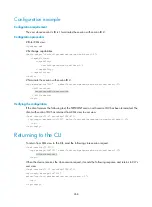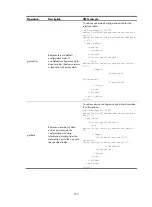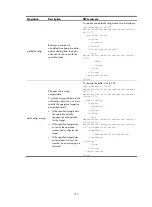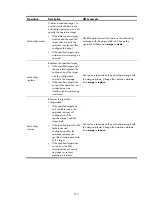
257
</capabilities>
</hello>
# Change the log buffer size for the Syslog module to 512.
<rpc message-id="101" xmlns="urn:ietf:params:xml:ns:netconf:base:1.0"
xmlns:web="urn:ietf:params:xml:ns:netconf:base:1.0">
<edit-config>
<target>
<running/>
</target>
<config>
<top xmlns="http://www.hp.com/netconf/config:1.0" web:operation="merge">
<Syslog>
<LogBuffer>
<BufferSize>512</BufferSize>
</LogBuffer>
</Syslog>
</top>
</config>
</edit-config>
</rpc>
Verifying the configuration
If the client receives the following text, the edit-config operation is successful:
<?xml version="1.0" encoding="UTF-8"?>
<rpc-reply message-id="100" xmlns="urn:ietf:params:xml:ns:netconf:base:1.0">
<ok/>
</rpc-reply>
Saving, rolling back, and loading the configuration
Use NETCONF to save, roll back, or load the configuration.
Saving the configuration
# Copy the following text to the client to save the device configuration to the specified file:
<?xml version="1.0" encoding="UTF-8"?>
<rpc message-id="101" xmlns="urn:ietf:params:xml:ns:netconf:base:1.0">
<save>
<file>
Specify the configuration file name
</file>
</save>
</rpc>
The name of the specified configuration file must start with the storage media name and end with the
extension
.cfg
. The total length of the save path and file name must be no more than 191 characters. If
the text includes the file column, you must specify the file name and the specified file will be used as the
next-startup configuration file. If the text does not include the file column, the configuration is
automatically saved to the default main next-startup configuration file.
Summary of Contents for 5920
Page 86: ...76 XGE1 0 2 N A P2P Two 0 ...
















































